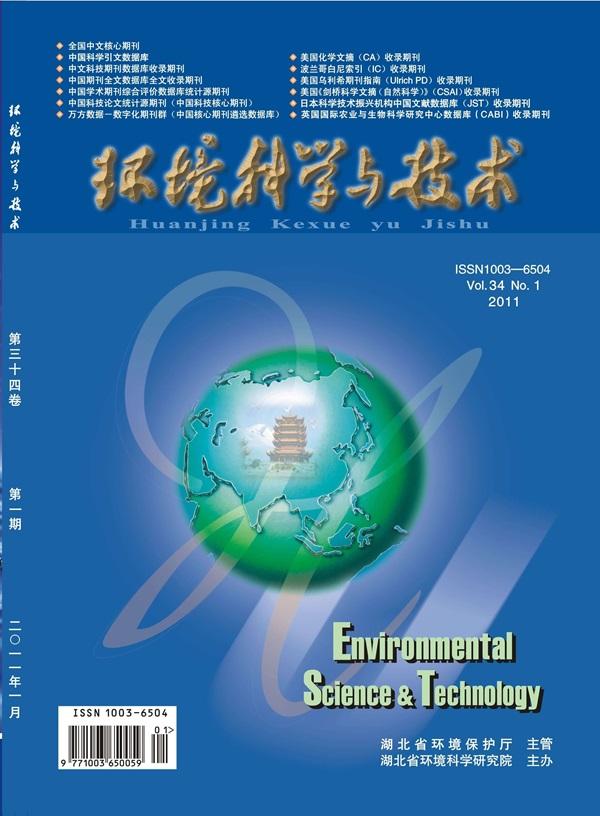Mechanistic Insights into the Inhibitory Role of Soil Humic Components in Iron (Oxyhydr)oxide Formation: From In Situ Kinetics to Molecular Thermodynamics
IF 11.3
1区 环境科学与生态学
Q1 ENGINEERING, ENVIRONMENTAL
引用次数: 0
Abstract
Due to the close spatial proximity and strong reactivity, soil humic components inevitably participate in iron (Fe) (oxyhydr)oxide formation, holding significant importance in contaminant immobilization, carbon cycling, and nutrient availability. Yet, the regulatory role of different humic components involved in the initial formation of Fe (oxyhydr)oxides is still lacking. In this study, we identified the characteristic formation periods of ferrihydrite (Fh), the initial phase of Fe (oxyhydr)oxides, through real-time monitoring of solution pH and in situ observations of precipitated Fh nanoparticles in the absence and presence of different humic components. The kinetics of Fh formation were quantified at micrometer and nanometer scales using Raman spectroscopy (RS) and atomic force microscopy (AFM), respectively. Results indicated that the extension of induction time, retardation of phase occurrence, and inhibition of nucleation rates for Fh formation were all dependent on the specific humic component with an order of fulvic acid (FA) > humic acid (HA) > humin (HM). Nanoscale data analysis revealed that the thermodynamic barrier to Fh nucleation increased by maximizing the interfacial free energy (γ) of the reaction system. Through molecular bonding quantification, AFM-based dynamic force spectroscopy (DFS) measurements demonstrated a linear relationship between Gibbs free energies (ΔGb) of soil organic matter (SOM) binding to Fh and γ within the classical nucleation theory (CNT), linking heterogeneous nucleation barriers with organo-mineral bonding. This study is the first to provide in situ evidence of the inhibitory effects of soil humic components on the formation of Fe (oxyhydr)oxides and quantitatively establish that higher energy barriers to nucleation correlate with stronger organo-mineral bonding. This relationship suggests that good organic binders are good inhibitors for mineral formation, offering a novel perspective for predicting the formation and fate of soil minerals through the lens of organo-mineral binding free energies.

土壤腐殖质组分在铁(氧)氧化物形成中的抑制作用:从原位动力学到分子热力学
土壤腐殖质组分由于空间接近性强、反应性强,不可避免地参与了铁(Fe)(氧)氧化物的形成,在污染物固定化、碳循环和养分有效性方面具有重要意义。然而,不同腐殖质组分参与铁(氧)氧化物初始形成的调节作用仍然缺乏。在这项研究中,我们通过实时监测溶液pH值和在不同腐殖质成分存在和缺失情况下沉淀的Fh纳米颗粒的原位观察,确定了铁水合铁(Fh)的特征形成时期,Fh是铁(氧合)氧化物的初始相。利用拉曼光谱(RS)和原子力显微镜(AFM)分别在微米和纳米尺度上定量了Fh的形成动力学。结果表明,诱导时间的延长、相发生的延缓和Fh成核速率的抑制均与腐植酸(FA)和黄腐酸(gt)的顺序有关;腐植酸(HA);腐殖质(HM)。纳米尺度的数据分析表明,当反应体系的界面自由能(γ)最大化时,Fh成核的热力学势垒增加。通过分子键量化,基于afm的动态力谱(DFS)测量证明了经典成核理论(CNT)中土壤有机质(SOM)与Fh和γ结合的吉布斯自由能(ΔGb)之间的线性关系,将非均相成核屏障与有机-矿物键结合联系起来。这项研究首次提供了土壤腐殖质组分对铁(氧)氧化物形成抑制作用的原位证据,并定量地确定了成核的能量屏障越高,有机-矿物结合越强。这一关系表明,良好的有机结合剂是良好的矿物形成抑制剂,为通过有机-矿物结合自由能的透镜预测土壤矿物的形成和命运提供了新的视角。
本文章由计算机程序翻译,如有差异,请以英文原文为准。
求助全文
约1分钟内获得全文
求助全文
来源期刊

环境科学与技术
环境科学-工程:环境
CiteScore
17.50
自引率
9.60%
发文量
12359
审稿时长
2.8 months
期刊介绍:
Environmental Science & Technology (ES&T) is a co-sponsored academic and technical magazine by the Hubei Provincial Environmental Protection Bureau and the Hubei Provincial Academy of Environmental Sciences.
Environmental Science & Technology (ES&T) holds the status of Chinese core journals, scientific papers source journals of China, Chinese Science Citation Database source journals, and Chinese Academic Journal Comprehensive Evaluation Database source journals. This publication focuses on the academic field of environmental protection, featuring articles related to environmental protection and technical advancements.
 求助内容:
求助内容: 应助结果提醒方式:
应助结果提醒方式:


